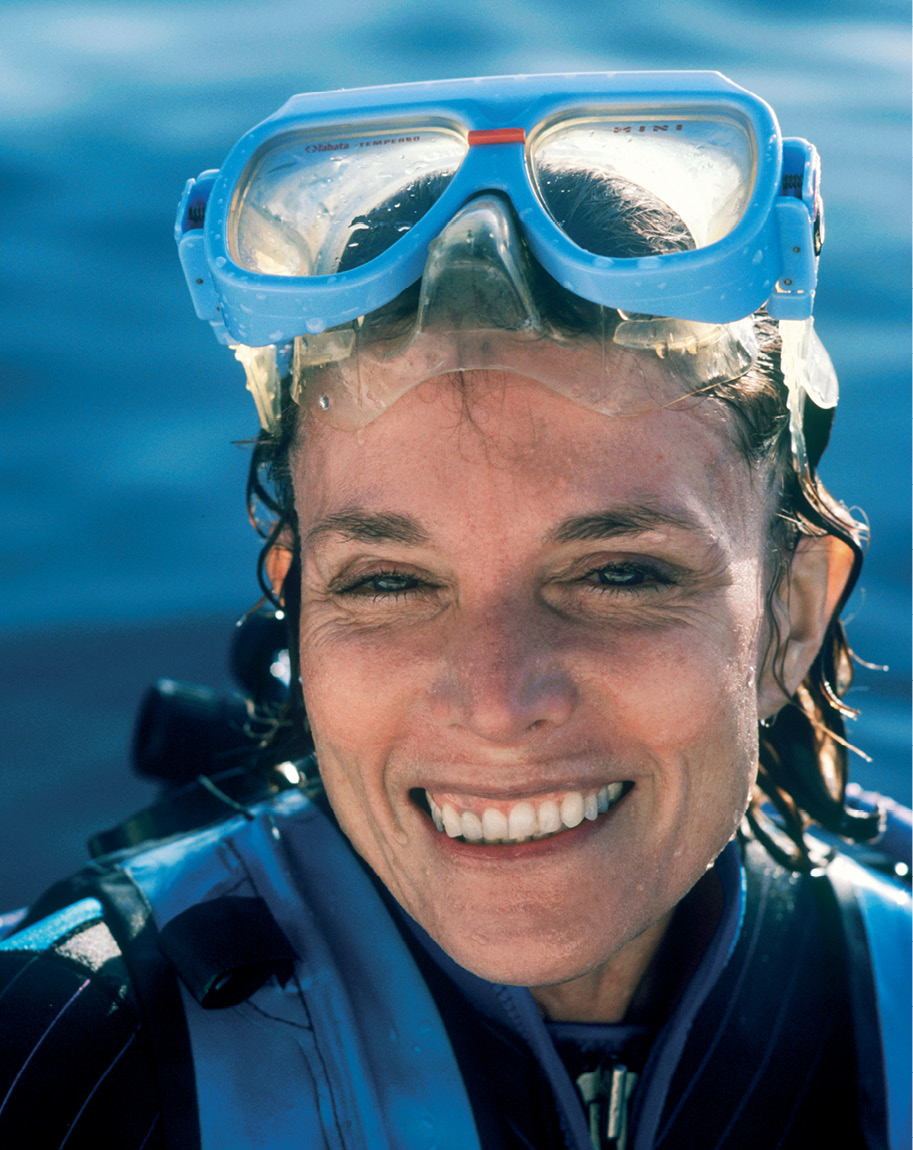Sylvia Earle

Hillary
On September 19, 1979, oceanographer Sylvia Earle, wearing an armored diving suit, descended 1,250 feet with the help of a research submersible to the seafloor, where she spent over two hours exploring. (Talk about pressure—Sylvia withstood six hundred pounds per square inch!) No human being had done that before or since.
As a little girl growing up on a small farm in 1930s New Jersey, Sylvia noticed the way her parents treated all living things with respect and empathy. She was fascinated by wildlife, and later, when her family moved to Florida, she loved investigating the creatures living in salt marshes and seagrass beds. Learning how to scuba dive in college at Florida State University, where she majored in botany, opened up a new frontier for her. As America entered the “space race” with Russia, Sylvia cast her sights downward, into the still-mysterious depths of the oceans. For her PhD, she collected more than twenty thousand samples of algae. In 1968, she discovered a landscape of undersea dunes off the coast of the Bahamas. The more she saw, the more she felt the inextricable connection between life on land and marine ecosystems, which were essential and needed to be protected. As she would later put it: “No ocean, no us.”
“I think if others had the opportunity to witness what I have seen in my lifetime… from thousands of hours underwater, I would not seem like a radical at all.”
—SYLVIA EARLE
Sylvia made national headlines in the 1970s, when she led the Tektite II experiment off the U.S. Virgin Islands. The first all-women’s team of aquanauts lived and worked fifty feet underwater for two weeks, exploring both the marine world and the possibility of future habitats at sea or even in space, with its similar environment. Their predecessors, the Tektite I team, had been all men. Sylvia and her crew did the same work as their male counterparts, with the same rigor and expectations. The all-women’s team of accomplished scientist-divers was seen as a novelty—one local paper kept referring to them insultingly as the “aqua-naughties.” Sylvia wasn’t losing sleep over the misogyny; she was too busy exploring the deep. The experiment led to important discoveries about aquatic life and human behavior: Crews living in the undersea habitat developed fierce bonds and became unusually cooperative with one another, while sometimes finding the “topside crew” extremely irritating.
During the experiment, Sylvia was struck by the fragility of the marine life she observed, including the impact of pollution on coral reefs. Afterward, she made it her life’s mission to sound the alarm and help everyone else understand the urgency of preserving and protecting the ocean. Over the years, her fellow scientists would often refer to Sylvia as “Her Deepness” or “The Sturgeon General.”
In 1990, Sylvia became the first woman to serve as chief scientist at the National Oceanic and Atmospheric Administration, and in 1998 was named by Time magazine as its first hero for the planet. She was also a National Geographic explorer in residence—which has to be one of the best job titles ever. I met her at the National Ocean Conference in 1998 and was impressed by her passion for sharing what she had seen with the rest of the world. To this day, she remains dedicated to making the case for mapping and exploring the oceans before they are damaged further, and she has committed her prodigious skills and talents toward that end.
When I think about Sylvia’s work, I am reminded how important it is for all of us to pause and consider what we want to leave to the generations who come after us—how we’ll honor the past, imagine the future, and give gifts to those who will live out their lives long after we’re gone. That’s exactly what Sylvia’s life as a scientist, an engineer, a teacher, and an explorer should inspire all of us to do: we must preserve our oceans for the future.